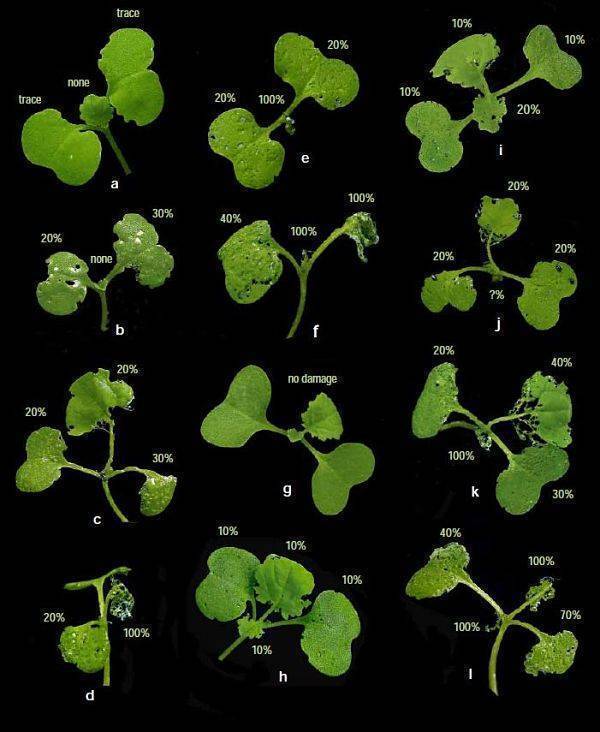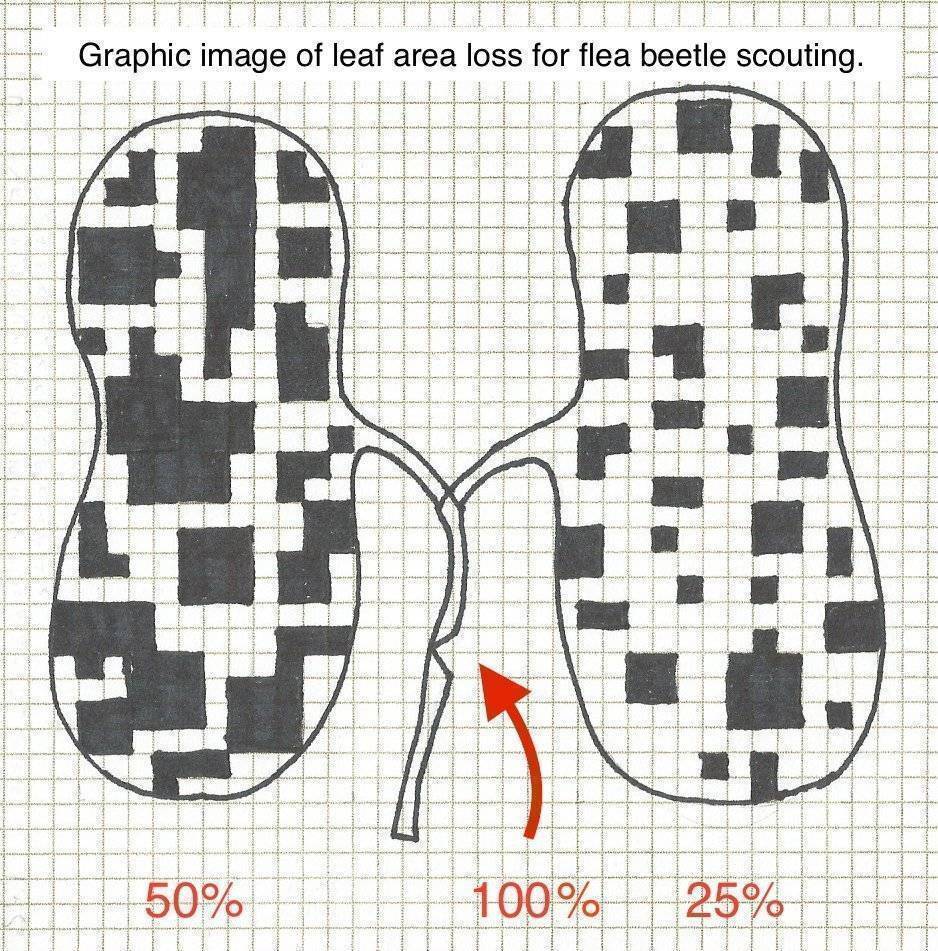Flea Beetle Management
These small jumping insects can cause big problems for canola, raps and many vegetable plants. It is critical to monitor their activity on the fields/gardens to reduce a risk to loose an yield.
Typical Damage: Shot holes in leaves, destruction of seedlings mid-May through June. Holes chewed in pods in August (occasional). Late season populations can be used as an indicator of next season populations.

When and How to Monitor: Monitor May through June when crop is in seedling stage. Begin scouting at field margins. Check for flea beetles actively feeding. Examine plants at random at each stop. Estimate overall percentage leaf loss. Watch for stem feeding issues, especially with populations of the striped flea beetle.
Economic Threshold: When 25% of leaf surface is destroyed and flea beetles still present. If damage is only concentrated on field margins and flea beetles still congregated there, then control measures should be applied to the damaged areas only.
Control Options:
DECIS 5EC (deltamethrin) – it is a Group 3 non-systemic Synthetic Pyrethroids with contact & ingestion mode of action.
Comments:
Do not spray under strong temperature inversion or when temperature > 25°C
Apply when flea beetles are actively feeding
In canola, do not apply more than once per season
MATADOR/ SILENCER 120EC (lambda-cyhalothrin) – it is a Group 3 non-systemic Synthetic Pyrethroids with contact & ingestion mode of action.
Comments:
Avoid spraying during heat of day
Apply when flea beetles are actively feeding
POUNCE (permethrin) – it is a Group 3 non-systemic Synthetic Pyrethroids with contact & ingestion mode of action.
Comments:
Avoid spraying during heat of day
Apply when flea beetles are actively feeding




